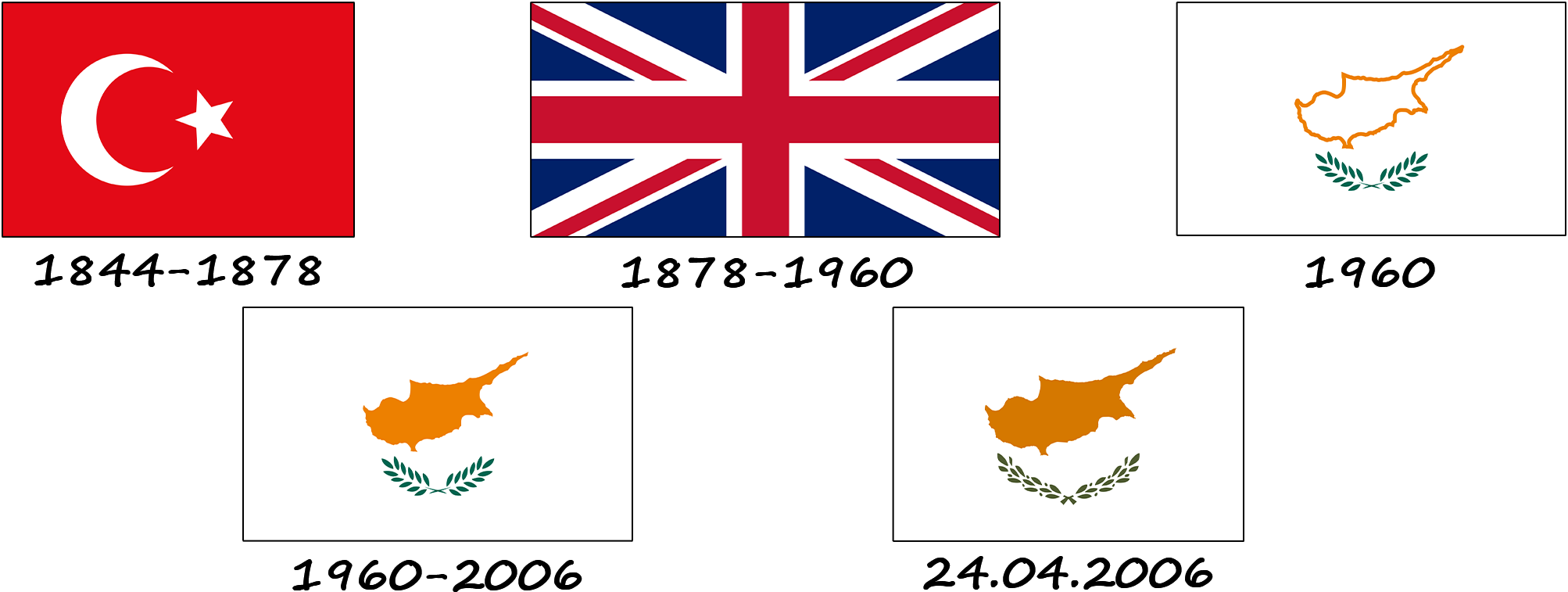For several centuries, Cyprus was part of the Ottoman Empire and was represented by the Turkish flag. In 1878, the United Kingdom gained administrative control over the island nation. Subsequently, the British colonial flag flew over the island, consisting of the British blue flag and the Union Jack in the canton (upper left part of the flag) and a pair of two red royal lions on the coat of arms. Greek Cypriots and Turks living on the island used the flags of Greece and Turkey as their national flags.

After Cyprus declared independence from Great Britain, a competition was organized to choose a flag design. It was determined that the flag should not use the color red, as it is associated with Turkey, and blue could not be used, as it is associated with Greece. Archbishop Makarios, the first president of Cyprus, and Fazil Kucuk, the vice president, accepted Mr. Güney's flag. They both agreed that it was the best of the options presented and approved the teacher's sketch, and the flag began to be used on August 16, 1960, in accordance with the Zurich and London agreements that declared Cyprus an independent state. Having lost his battle with cancer, Ismet Güney died at the age of 77 in 2009. Importantly, in 2006, Güney asked the government to pay him a royalty for his design, as well as compensation for the use of his copyright. According to Ismet, Makarios promised him 20 Cypriot pounds a year for winning the flag contest, but never paid him. In April 2006, the flag's design was updated, with the shape of the olive branches and their color slightly changed.
Many ships in the world fly the Cypriot flag, as it has the third largest fleet in the European Union - 16% of the total fleet of the 25 EU member states. The capacity of the European fleet has increased since Cyprus joined the EU.



